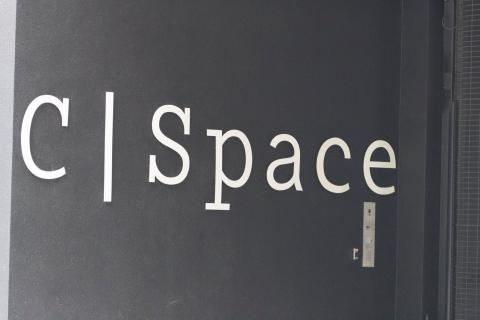10 Tips for facilitating Group Clean Space
by Jacqueline Ann Surin in Clean Space, Systemic Modelling

If we can expect the unexpected to happen while facilitating an individual using David Grove’s Clean Space process, we can expect even more surprises when running a Group Clean Space process.
A couple of years ago I facilitated a Group Clean Space for an international human rights organisation in Malaysia. The organisation needed a facilitator to figure out the country position on a new global strategy for 2035.
Here are some tips that helped me run a successful facilitation for the group. Many of these ideas originated from a conversation with James Lawley in April 2019 in preparation for this work. These are in addition to the ideas on Group Clean Space in Chapter 7 of James’ and Marian Way’s book, Insights in Space.
1. Introduce minimally and get buy-in
The first thing I did, before I even started designing the process, was to get the executive director’s support to facilitate in a novel way.
Then in my pre-workshop note to participants, I introduced the idea that we’d be doing something a bit different: “This meeting will be facilitated in a way you may not have experienced before. We will be using space for collective exploration and learning about what you would like to have happen in 2035.”
Once at the workshop, my instruction before the first exercise was: “We’ll be doing something new that uses space as a resource for you to figure things out. And I’ll be giving you instructions step-by-step. And the best way to do this is to just do it. Would that be OK?”
2. Warm up first
My warm-up activity was to get the group to reflect on what they already knew about the current situation, before we would go on to thinking about the future. I eased them into using space by first asking them to work on the wall, before we used the entire floor and room space for the big exercise. By the time we got to the big activity, it was no longer unusual for them to use space to consider the questions they were grappling with.
3. Trust the process and the space
None of the participants had experienced Clean Space before. And yet, once they started placing their Post-it® notes where they needed to be in relation to their topic, they immediately started clustering and making sense of the space around and in between those clusters.
I didn’t have to say anything before they started organically moving things around so that everyone’s Post-it® notes were just where they needed to be. Once that was done, I asked, “And what do you know now about [the topic]?” and their insights emerged almost instantly.
4. Have multiple spaces to support the process
What worked really well for me was that apart from the floors and walls, I also had a white board and a flip chart with clean paper. We parked the ideas that emerged that we couldn’t deal with immediately on the flip chart so that we could return to them later.
5. Vary group sizes
I introduced individual and paired exercises as well as getting the whole group to work together. This allowed for different styles of learning and reflection.
6. Keep the group in the right state
To ensure enough time for reflections after each session, we took breaks whenever the group needed it, even if that meant we would not complete the planned agenda.
I also needed to watch that the group was in the state they needed to be. For example, if I wanted them to envision their future, were they sufficiently in dreamer state to be able to do that? Or if I needed them to evaluate their position, were they able to play critic?
If they were not in the right state, I needed to do something to change their state.
7. Consider ‘What-ifs’
I needed to anticipate what I would do if things didn’t go according to plan. For example:
What will I do if I don’t have enough time? I will drop the activities the group could later do on their own.
What will I do if participants have objections? I will acknowledge any objections, and ask participants to write them on Post-its and then find a space for them (e.g. on the flipchart), with a promise to return to them at a suitable point in the day.
What if a participant shares their ideas from their observer space, instead of from within the network? I will say, “Find a space within here [the demarcated space for the network] for that, and mark it with a Post-it.”
What if a participant stays in the observer space for a long time without saying or doing anything? I will invite them to bring their reflections into the space by saying, “What are you noticing from there? Find a space in here [the demarcated space for the network] for that and mark it with a Post-it.”
What if one of my activities is too hard for the participants? I will simplify it. For example, if they are not able to answer a question about what they are like at their best, I’ll swap it for, “What’s working really well?”
8. Remember fractals
Fractals are “infinitely complex patterns that are self-similar across different scales”. They are always happening in any system. When something happens in the group, it will be an example of the pattern that is going on at a higher level. One way for me to understand a group at a higher level is to notice a fractal and to ask myself, “What is happening now?”
9. Hold higher value principles for the group
During the process, a disagreement occurred between two different groups. It was more important that they learned how to unpack their drama first than it was to continue exploring their topic.
This would enable them to manage differences on their own when it occurred in future. I asked each participant, “And what’s happening for you?” And “When it’s like that, what would you like to have happen?” And “What’s the smallest thing you could do so that everyone is at their best for the rest of the day?”
I only resumed with the Clean Space activity once the group had made the changes they needed for them to be in a resourceful state for the activity.
10. Notice empty spaces
In the facilitation I ran, the eight participants used only a small portion of the floor space to build their network of ideas.
I asked the group at the close of the exercise, “And what do you know now about all of that [sweeping gesture at the space they had just worked in]?” and that elicited a profound insight: “The borders represent 2035. The empty spaces are all the unopened Post-its that we can’t yet place because these are events that are not yet part of our journey. And when they happen, we should not be afraid of opening those Post-its.”
Here are a few other suggestions from James Lawley:
If some participants are standing near the cluster of Post-Its, ask: “And what do you know from (here) about [gesture to the empty space]?”
This could be followed by: “And find a space outside of all this [gesture to cluster].”
Wait for people to move elsewhere, presumably still inside the marked boundary, and you never know, and then ask: “And what do you know here?” And then, “And what do you know here about [gesture to cluster]?”
And if participants are already in the observer or a Meta space outside the boundary, ask: “And what do you know about [gesture to the empty space] when [gesture to the Post-It® cluster]?”
Related blog posts
9 Reasons to Learn and Use Clean Space
14th Apr 2019
Clean Space for Scoping and Deepening Outcomes
28th Mar 2019
Finding your creative place with Clean Space
7th Feb 2019
Using Clean Space with organizational trauma
7th Nov 2018
Related courses
About Jacqueline Ann Surin
Jacqueline Ann Surin is a Level 1 Clean Facilitator, the first Master Level Systemic Modeller in Asia, and is qualified as a Professional Certified Coach (PCC) with the ICF. She is an associate of Clean Learning and Training Attention in the UK, and a specialist-partner of the Singapore-based BeInClarity. She was previously an award-winning journalist and has a published chapter in Clean Language Interviewing: Principles and applications for researchers and practitioners.
She can be found on LinkedIn.
- Blog categories
- A - Z of Clean
- Adventures in Clean
- Book Reviews
- Business
- Clean Ambassadors
- Clean Interviewing
- Clean is like ...
- Clean Language
- Clean Language Questions
- Clean Space
- Client Stories
- Coaching
- Creativity
- #DramaFree
- Education
- Health
- ICF
- Life Purpose
- Listening
- Metaphor
- Modelling
- Outcomes
- Practice Group
- Symbolic Modelling
- Systemic Modelling
- Training



